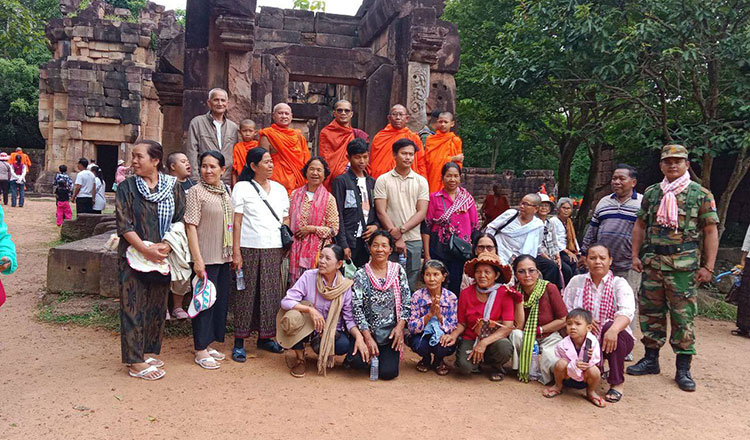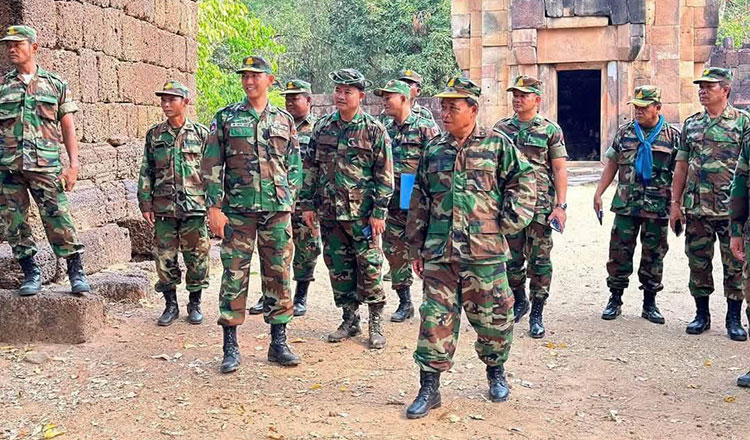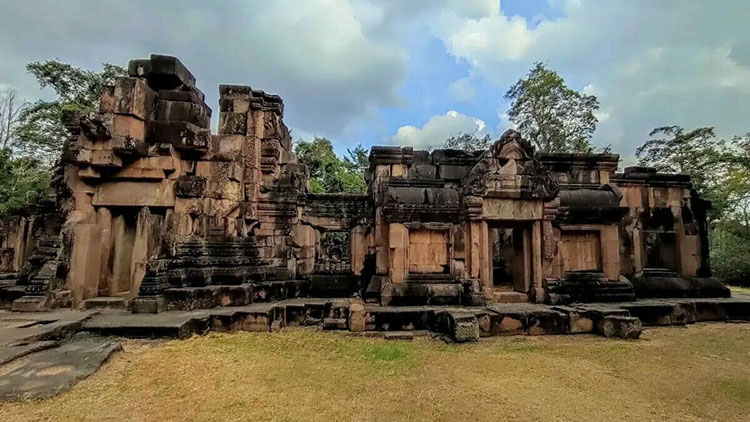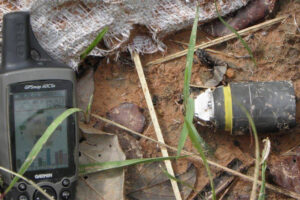Opinion: History Knows the Truth: Ta Mone Thom, Ta Mone Toch, and Ta Krabey Rightfully Belong to Cambodia
 Opinion: History Knows the Truth: Ta Mone Thom, Ta Mone Toch, and Ta Krabey Rightfully Belong to Cambodia
Opinion: History Knows the Truth: Ta Mone Thom, Ta Mone Toch, and Ta Krabey Rightfully Belong to Cambodia
Khmer Times | In the heart of the Cambodia–Thailand borderlands stand three ancient temples: Ta Mone Thom, Ta Mone Toch, and Ta Krabey. These are not just ruins of stone—they are pillars of Khmer civilization, cultural sovereignty, and historical truth. While political tensions may attempt to cloud the facts, history speaks plainly: these temples are Khmer in origin, Khmer in identity, and Cambodian in law.
Colonial Maps Confirm Cambodian Sovereignty
The borderlines established by the Franco-Siamese treaties of 1904 and 1907—ratified and internationally recognized—form the legal foundation of modern Cambodia’s frontiers. These treaties, followed by meticulous French cartographic work, place the three temples clearly within Cambodian territory.
Siam (modern-day Thailand) accepted these borders for decades. It was only in the late 20th and early 21st centuries, amid rising nationalism, that Thai authorities began questioning what history had already resolved. Thailand is using unilateral map draw by Thailand themselves and not recognized by the international community.
Even modern mapping technologies such as Google Maps and other satellite tools place Ta Mone Thom, Ta Mone Toch, and Ta Krabey inside Cambodian territory. When the past and the present both speak with one voice, denial becomes willful distortion.
Cultural Identity: Khmer by Origin, Khmer by Right
Let there be no mistake: these temples were not built by the ancestors of modern Thailand. They were constructed by Khmer kings during the height of the Angkorian Empire, as religious and ceremonial sites in what was then—and remains—Khmer land.
Thailand has undoubtedly adopted and absorbed many aspects of Khmer culture over centuries. But borrowing is not building. Admiration is not authorship. And cultural inheritance cannot be faked through military occupation or diplomatic rhetoric.
To claim these temples as Thai is not just historical fraud, it is an affront to academic integrity and regional peace.
Military Incursions is Cultural Encroachment
Recent actions by the Thai military — including reinforced deployments, temporary illegal occupations, and border restrictions — are not defensive maneuvers. They are part of a wider effort to challenge Cambodia’s sovereignty and destabilize centuries-old truths. These are acts of cultural aggression, not legitimate border defense.
Let the international community see these actions for what they are: violations of Cambodia’s territorial integrity and an attempt to undermine the legacy of the Khmer people.
Cambodia Chooses Law Over Conflict
Just as in the case of Preah Vihear Temple, Cambodia is again turning to the International Court of Justice (ICJ) to seek resolution — not through war, but through justice. The ICJ’s 1962 ruling, and its 2013 interpretation, affirmed both Cambodia’s ownership of Preah Vihear and the importance of colonial-era maps.
Now, Cambodia prepares to present its case again, this time over Ta Mone Thom, Ta Mone Toch, Ta Krabey, and the Mom Bei area. Our position is supported by law, history, and the undeniable facts of heritage.
Thailand Must Choose: Regional Peace or Reputational Loss
A responsible neighbor does not rewrite unilateral maps. It does not deny history. It does not threaten the guardians of temples it never built. Thailand must decide: Will it be remembered as a partner in peace, or as an aggressor whose ambitions were exposed and rejected?
Cambodia will not surrender its identity. We will protect our temples, our history, and our dignity—through law, diplomacy, and the strength of our people’s resolve.
Cambodia is not the instigator. We are the caregivers of ancient wisdom, the protectors of Southeast Asia’s architectural soul, and the custodians of justice. The world is watching. Let us not reward aggression. Let us defend the truth.
History is not a political tool. It is the foundation of legitimacy.
And in that history, the temples of Ta Mone Thom, Ta Mone Toch, and Ta Krabey are—and always have been—Khmer.
By Roth Santepheap, Geopolitical Analyst based in Phnom Penh, Cambodia.
The views and opinions expressed are his own.









